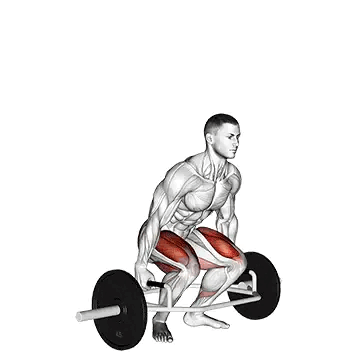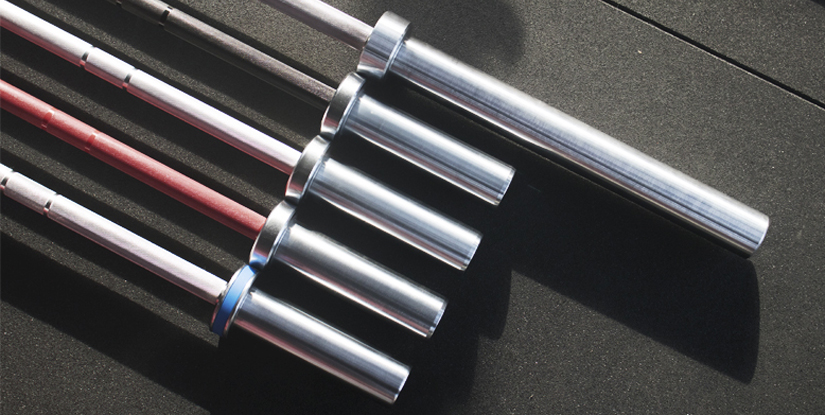I used to think the box bar deadlift was just a watered-down version of the real thing. I was all in on straight bar pulls—week after week, grinding reps. But eventually? My lower back was constantly smoked, and my knees weren’t feeling too hot either.
So one day at the gym, I grabbed the trap bar instead. Just to try it. No big expectations.
But right away, it felt smoother. Stronger. Way less stress on my back. I didn’t have to fight for position—I could just lift.
Since then, I’ve been mixing it into my programming, especially with new members or lifters bouncing back from tweaks. And honestly? I haven’t looked back.
Box Bar Deadlift vs. Straight Bar: Side-by-Side Breakdown
When I first swapped in the box bar deadlift, I honestly didn’t expect much. But right away, I noticed the lift felt way different—like night and day. Here’s how they stack up for me:
| Aspect | Box Bar Deadlift | Straight Bar Deadlift |
|---|---|---|
| Back Stress | Way lower—felt way safer on my spine | Always felt like I was risking my low back |
| Quad Involvement | Way more quad-dominant, knees felt strong | Mostly hamstrings and glutes |
| Form | Easier to lock in—more upright posture | Tougher to stay tight, easy to round back |
| Grip & Set-Up | Neutral grip, simple to get into position | Awkward to set up, especially with longer arms |
| Confidence Under Load | I felt solid pulling heavier with it | I was more hesitant to push heavy |
| Recovery | Legs sore, not fried—could train more often | Needed extra recovery time every time |
What Changed for Me After Switching
- Back strain? Gone. Seriously. My low back stopped barking after every session.
- Form felt clean. I didn’t have to overthink my setup. Hips, knees, everything just clicked.
- My quads started pulling more weight. I could actually feel them doing work, instead of just my hamstrings screaming.
- And yeah—it still felt heavy. But heavy in a good way. Controlled. Safer.
The biggest win? I trained more often—because I didn’t feel wrecked after. No skipped lifts. No lingering aches. Just steady, solid progress.
What the Box Bar Deadlift Actually Is
Alright—so what even is a box bar deadlift?
Basically, it’s a deadlift using a trap bar—also called a hex bar or box bar, depending on who you’re talking to.
The key difference? The handles sit at your sides, not in front of you like a straight barbell. That small change? Total game changer.
It puts you in a more upright stance. Less hinge, more squat-style pull. Feels like a hybrid between a deadlift and a front-loaded squat. Super solid for lifters who wanna pull heavy without wrecking their backs.

Here’s How I Set It Up in the Gym
I keep it real simple when I’m coaching new members on it:
- Step inside the bar—feet about hip-width, maybe a tad wider.
- Grab the high handles (most bars have them), knuckles down, grip tight.
- Chest up, core braced—don’t let that back round.
- Drive through your heels and stand tall—squeeze the glutes up top.
- Control the way down—don’t drop it or bounce the reps.
And one more thing? I always tell them:
Start light. Get the pattern first. Don’t chase numbers till the form is locked in.
Once they nail that, the box bar becomes a staple real quick.
Why the Trap Bar Deadlift Just Hits Different
Honestly, once I switched to the box bar deadlift, it felt like everything just clicked. It wasn’t just about feeling safer—it actually made lifting feel smoother and more natural. Here’s why it works so well (especially in a commercial gym setting):
Beginner-Friendly
The setup’s way less intimidating. I’ve had new members pull solid reps on day one. No crazy mobility required, no overthinking the hinge.
Less Stress on the Spine
Since the handles are at your sides, there’s less forward lean. That means your low back isn’t getting beat up every pull. Huge win.
More Quad and Glute Engagement
Feels more like a push than a pull. My quads were lighting up the first few sessions. But in a good way.
Better Posture, Better Positioning
It naturally puts you in an upright position. So form is easier to hold—even under heavier loads. Less cueing, less correcting.
Super Versatile
Whether someone’s chasing strength, speed, or coming back from tweaks, this lift fits. I’ve used it for power days, circuits, even rehab-style flows.
So yeah, the box bar deadlift isn’t just a “backup” lift—it’s legit. And in a busy gym setting, it checks all the right boxes.At the end of the day, the box bar deadlift became a no-brainer in our gym. It gets people lifting strong, safe, and often—and that’s the kind of win every coach wants to see.
FAQs about Box Bar Deadlift
It’s easier on your back, hits quads more, and helps you lift with better form—especially if you’re new or banged up.
The trap bar usually weighs around 45–65 lbs, but check your gym’s—some are heavier depending on brand and design.
For beginners, 135 is a solid start. Eventually, it’s light—but it builds consistency and form, which matter most early on.

Hi, I’m the editor here at Leadman Fitness. We’re a manufacturer focused on producing top-quality barbells, plates, kettlebells, dumbbells, and strength training gear. I’ve been into sports and fitness for years, and I know my way around all kinds of gym equipment—both from using it and helping create it.
I spend a lot of time understanding the real problems people run into in the gym—whether it’s beginners trying to pick the right gear or experienced lifters looking for something more durable. I stay in close touch with our production team and talk directly with other equipment makers, so we’re always improving based on what real lifters and coaches are looking for.
What I share comes from hands-on experience—stuff that actually helps people train better, not just in theory, but in real gyms.
